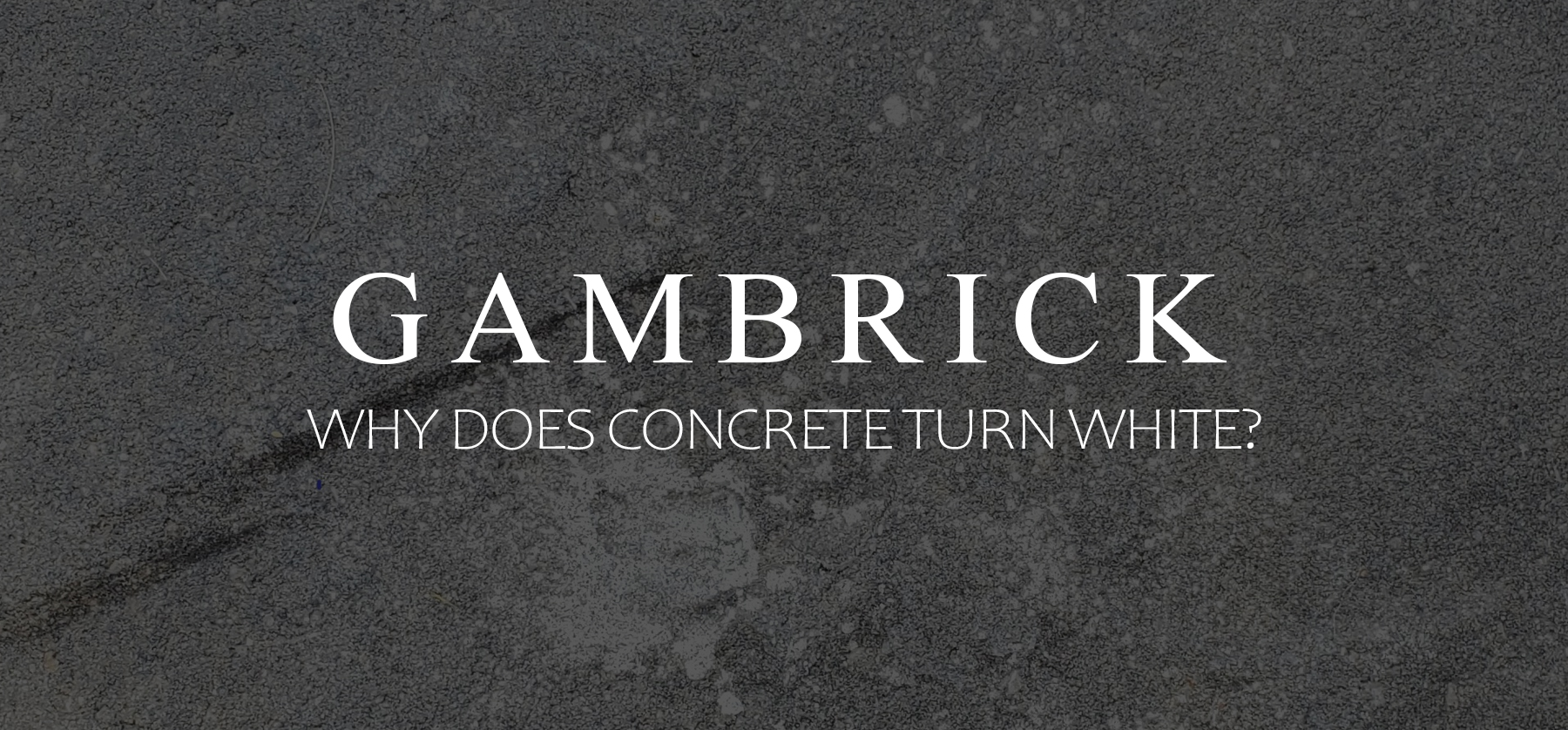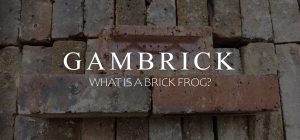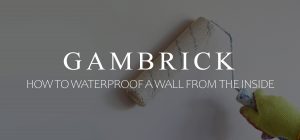
Why Does Concrete Turn White?
Although there are many causes of concrete appearing white, the most common is called efflorescence. Research shows that efflorescence is not dangerous, but is a sign of moisture absorption and evaporation which can eventually lead to structural damage. Efflorescence is a chalky white salt residue that can occur on concrete and other cement products. As moisture absorbs into the concrete and then evaporates out, it carries calcium salts with it. When salt reaches the surface, it reacts with CO2 in the air to form insoluble calcium carbonate. This carbonate has a white appearance. Although this process is natural, it can easily be cleaned up.
The best way to prevent concrete changing color is by sealing it to prevent this cycle from occurring.
Concrete is a mixture of cement, sand, and aggregate mixed with water. These ingredients make concrete naturally gray in color. Water and cement chemically react to form a paste that binds aggregate together. The entire mixture hardens over a period of time which is called curing.
Whitening is a phenomenon that occurs once the concrete hardens and starts to absorb water. So if you want to prevent your concrete from turning white you need to prevent water absorption.
The best way to do this is a good quality sealer. It prevents water from absorbing into the concrete which keeps salt minerals locked in and away from the surface.
The warmth of solar energy draws water vapors to the surface of the slab. This cycle of water absorption and evaporation can also cause whitening. Thus, concrete surfaces exposed to sunlight are whiter than those in shaded areas.
Efflorescence
Efflorescence is a white, powdery substance on concrete and other cement surfaces. It’s very common on brick walls and easy to spot because white stands out against the red bricks. However, it can also be yellow or brown-green in color, depending on the type of salts used to make the concrete. Although nobody wants it on their concrete surface, it’s not generally considered dangerous or hazardous.
Water vapors that travel through the slab bring salts to the concrete surface, causing efflorescence that makes the concrete appear white. Bear in mind that vapors migrating through the slab get soluble salts, which absorb in the concrete surface. As a result, the concrete turns white. You can deal with this problem using mild acid to rinse the surface.
Research shows that alkalis, such as potassium sulfates and sodium sulfates, are soluble salts that cause 90% of efflorescence in the concrete. These alkali sulfates appear on the concrete when sulfate ions react with calcium aluminate hydrate or calcium hydroxide. Not only does this reaction cause concrete to appear white, but it also results in cracking, expansion, and mass loss.
Acrylic Sealers
Acrylic sealers have a unique design that allows water vapors to pass through the concrete. However, they don’t allow concrete to absorb water. Research shows that a heavy application of acrylic sealer can compromise concrete’s breath-ability and condense water vapors beneath the sealer. As a result, the bond between the sealer and concrete breaks and leads to the formation of white color.
High Moisture Levels
The use of sealers can increase moisture levels in the concrete. Because concrete offers more room for water, it absorbs moisture on the inside. That’s why you can’t see it on the surface.
Although causes of high moisture levels vary, research shows that the most common reasons are a high water table, water running off from heavy landscape, and underground water sources that cause hydrostatic pressure. All this makes the concrete appear white.
Beauty and strength converge in decorative concrete. Like a good acid stain, they fuse together to create a durable, pleasing floor that literally becomes the foundation of its space and atmosphere. Achieving the desired result requires that you consider a number of variables for the specific stain and sealer combination you select.
Water-Spotting
Some areas have water sources with concentrated mineral content. When concrete absorbs water with higher mineral levels, the vapors evaporate quickly, leaving behind a white residue on the surface.
A chalky white salt residue due to vapor evaporation can cause the concrete to appear white. When moisture migrates up to the concrete surface, it carries calcium salts from the concrete material.
These salts react with carbon dioxide in the air and form calcium carbonate. Concrete can’t absorb the newly formed compound, causing white spots on its surface. Because the insoluble calcium carbonate remains on the surface for a long time, the concrete appears white.
Blushing
Blushing refers to the milky appearance within the concrete sealer. The problem occurs when water-based sealers trap moisture during the curing process. Research shows that blushing can also occur due to insufficient coalescence of the film.
Low temperatures below ten degrees Celsius or fifty degrees Fahrenheit can harm the film formation of water-based products, leading to high moisture levels and slow evaporation. As a result, the concrete surface appears white or milky.
Summary: Why Does Concrete Turn White?
Although there are many causes of concrete appearing white, the most common is called efflorescence. Research shows that efflorescence is not dangerous, but is a sign of moisture absorption and evaporation which can eventually lead to structural damage. Efflorescence is a chalky white salt residue that can occur on concrete and other cement products. As moisture absorbs into the concrete and then evaporates out, it carries calcium salts with it. When salt reaches the surface, it reacts with CO2 in the air to form insoluble calcium carbonate. This carbonate has a white appearance. Although this process is natural, it can easily be cleaned up.
The best way to prevent concrete whitening is by sealing the concrete which prevents this cycle from occurring. Concrete is a mixture of cement, sand, and aggregate mixed with water. Water and cement chemically react to form a paste that binds aggregate together. The entire mixture hardens over a period of time which is called curing. Concrete is one of the most commonly used construction materials in the world and almost always contains some amount of salt.
The question is: why does concrete turn white? Whitening is a phenomenon that occurs once the concrete hardens and starts to absorb water. So if you want to prevent your concrete from turning white you need to prevent water absorption. The best way to do this is a good quality sealer. It prevents water from absorbing into the concrete which keeps salt minerals locked in and away from the surface.
The warmth of the sun draws water vapors to the concrete surface. This cycle of water absorption and evaporation eventually leads to whitening. Thus, concrete surfaces exposed to sunlight are whiter than those in shaded areas.
If you have any questions or comments about concrete whitening E-mail any time.

John Mazzuca | About | More Posts |
Custom Home Builder
John Mazzuca is a custom home designer and builder at Gambrick with over 25 years experience in the construction industry. John has designed, built and/or remodeled hundreds of homes, small buildings, and commercial projects. He writes about business, real estate, home building, and household electronics. His work has been featured in Fox Business, Better Homes & Garden, House Beautiful, and more.




















